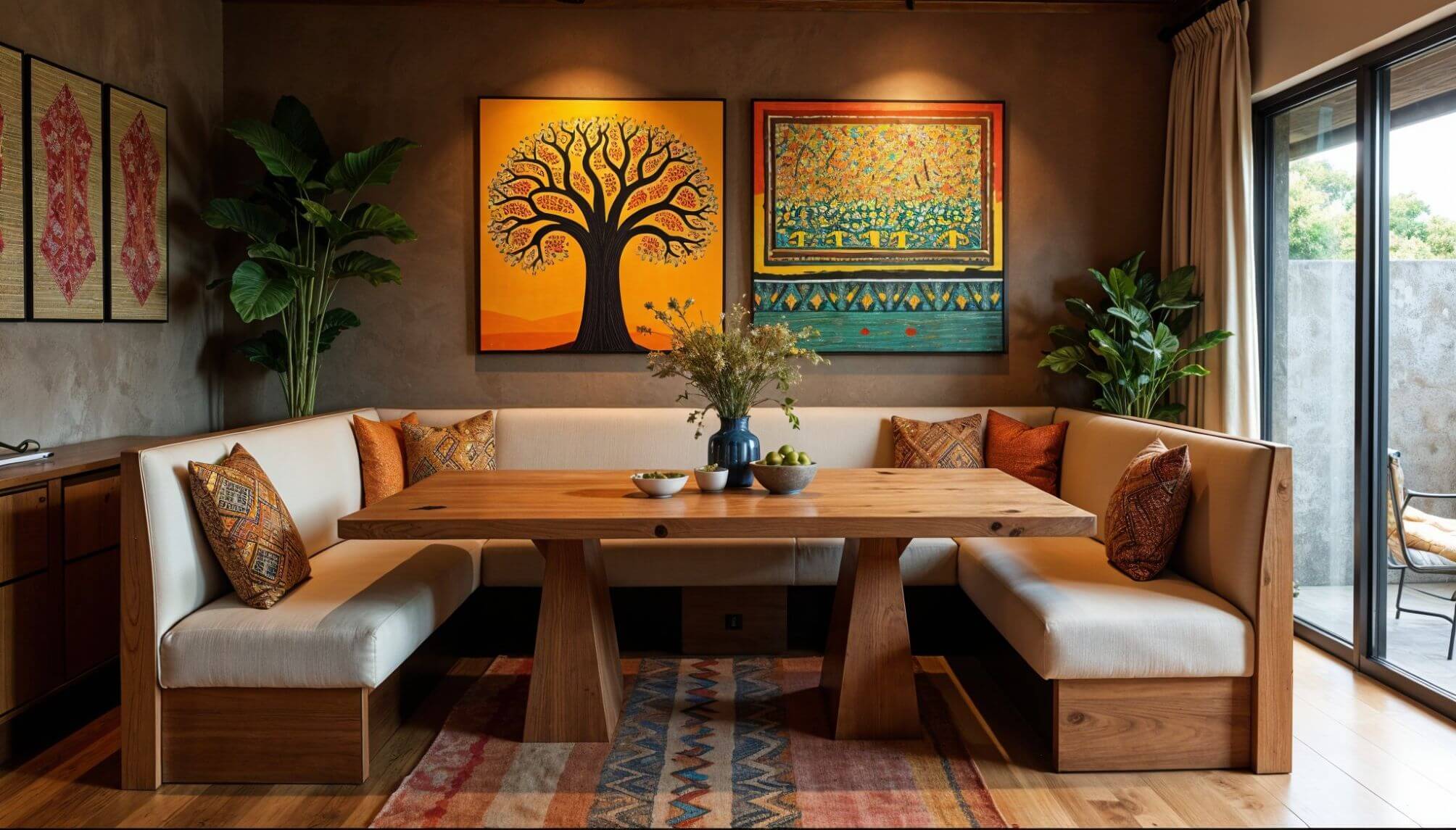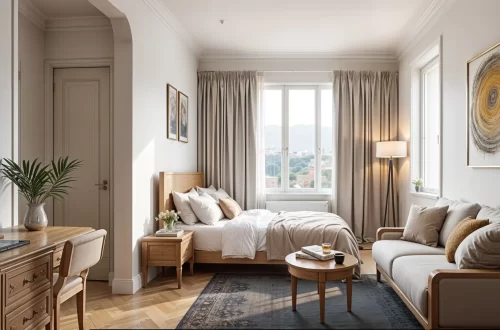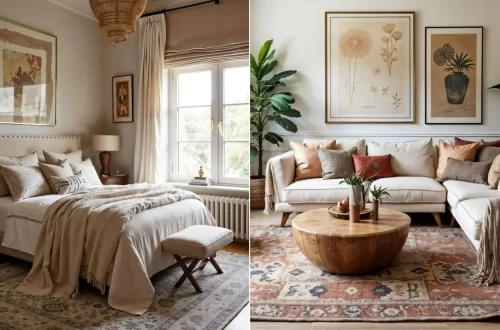From Senegal’s golden sands to the lush forests of Ivory Coast, West African Interior design is as diverse as the landscapes that shape it. It is an an amazing world of craftsmanship, culture, and color.
I grew up in Senegal, where homes’ furniture had weight and presence. Colors sang from room to room and prints made spaces come alive. This was West African interior design in its purest form, and I didn’t realize how deeply it shaped my sense of beauty until years later.
Now, when I walk into spaces decorated with West African elements, something shifts. The woodcraft, textiles, and art come together to radiate a special kind of energy. These three pillars create interiors that pulse with the heartbeat of the region.
Let me show you what makes West African interior design unlike anything else.
In this article:
- 1. Woodcraft: The Anchor of West African Interior Design
- 2. Textiles and Patterns: Bringing Color and Culture Home
- 3. Vibrant West African Art: The Soul of the Region
1. Woodcraft: The Anchor of West African Interior Design
Wood forms the backbone of West African interiors, but calling it “furniture” feels inadequate. In this region, wood isn’t just a material; it’s a medium for storytelling and artistry.
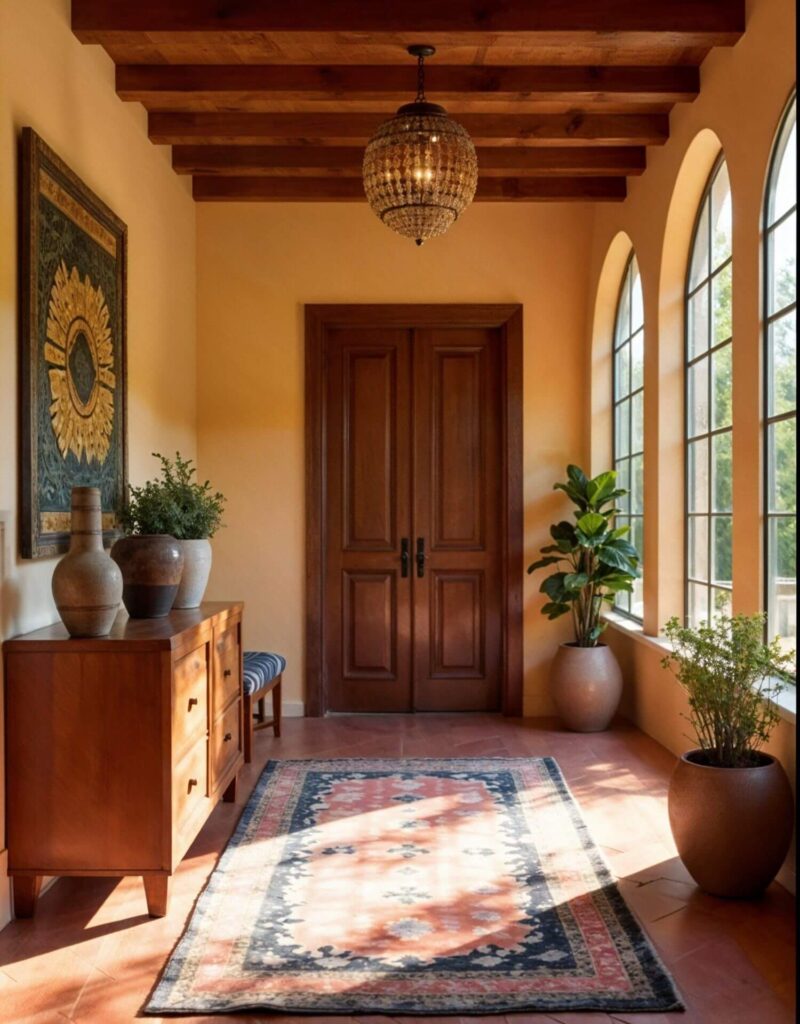
Walk through homes across the region and you’ll find tables, chairs, stools, and doors made from durable local woods. Teak, ebony, mahogany—each piece carved using techniques that honor age-old traditions. The craftsmanship isn’t just amazing. It’s a living archive of cultural knowledge.
Stools Command Attention
Let’s start with West African stools because they reveal something essential about the region’s design philosophy. More than just places to sit, they’re statements, symbols, and sometimes sacred objects.
Take the iconic Ashanti stools from Ghana. Their curved seats and masterful carvings make them instantly recognizable. More importantly, they symbolize royal power and cultural identity. A chief’s stool holds spiritual significance, believed to house the soul of the nation itself.
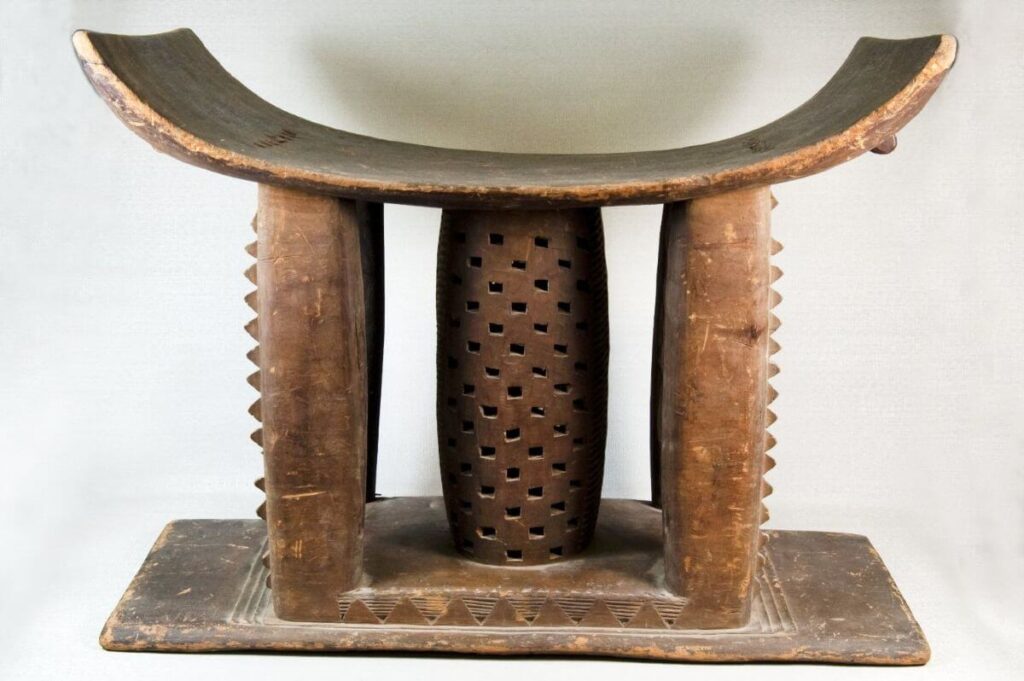
Meanwhile, Senufo stools from Ivory Coast take a different approach. Their elegance lives in minimalist forms and understated beauty.
Both authentic antiques and modern interpretations appear throughout West African homes today. They work beside sofas as side tables, provide extra seating during gatherings, or stand alone as sculptural focal points. That versatility makes them invaluable in contemporary interiors.

Tables Ground Your Space
Gorgeous tables crafted from native woods make some of the most beautiful statements in West African interior design. Coffee tables, console tables, dining tables, and more. Mahogany remains my personal favorite for its rich color and grain.
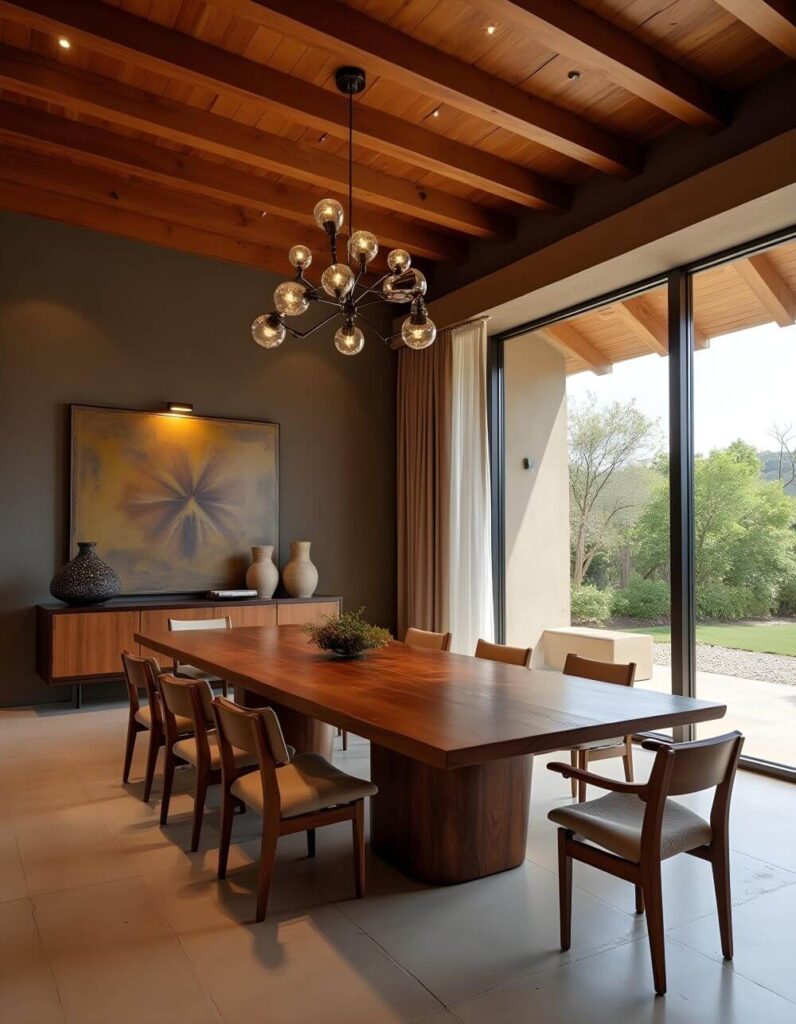
These pieces carry a grounded, sophisticated presence that synthetic materials simply cannot match. The wood itself expresses something through its patterns and imperfections.
If you’re considering such a table, look for pieces made from reclaimed wood. This choice preserves forests while supporting local sustainability initiatives. The character of reclaimed wood often surpasses new lumber, with weathering and age adding depth to the natural beauty.
Carved Doors Are Living Art
For those who really want to make a statement, African carved doors are the way to go. Picture this: a massive wooden door adorned with symbolic motifs representing centuries-old beliefs and traditions.
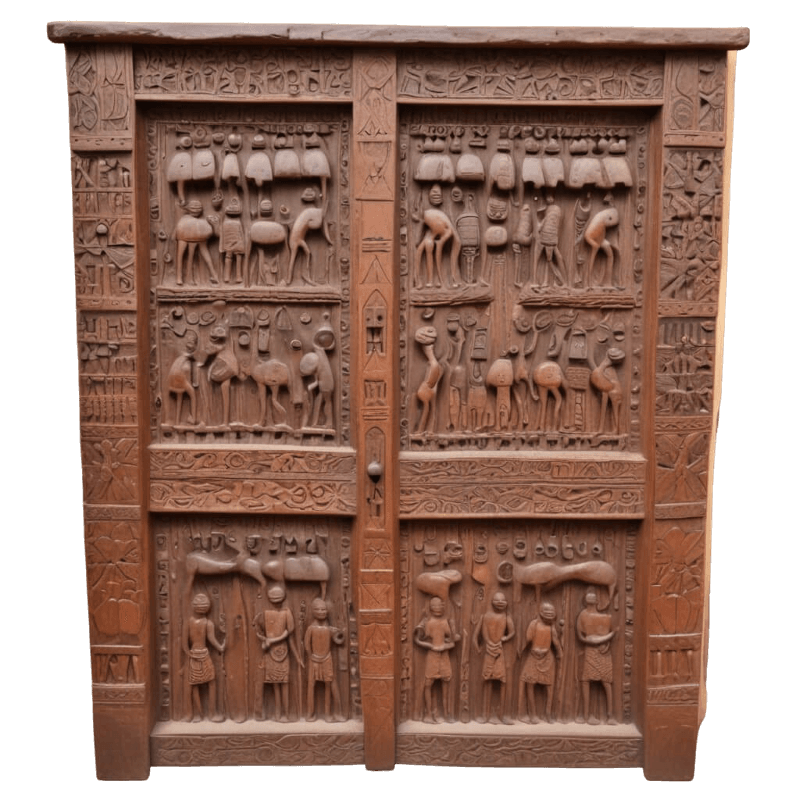
In Nigeria, Yoruba artisans create carved doors depicting community values and historical events. The carvings map social structures, celebrate leaders, and encode wisdom for future generations. Meanwhile in Mali, the Dogon people craft doors with carvings inspired by ancestral legends and cosmological beliefs.
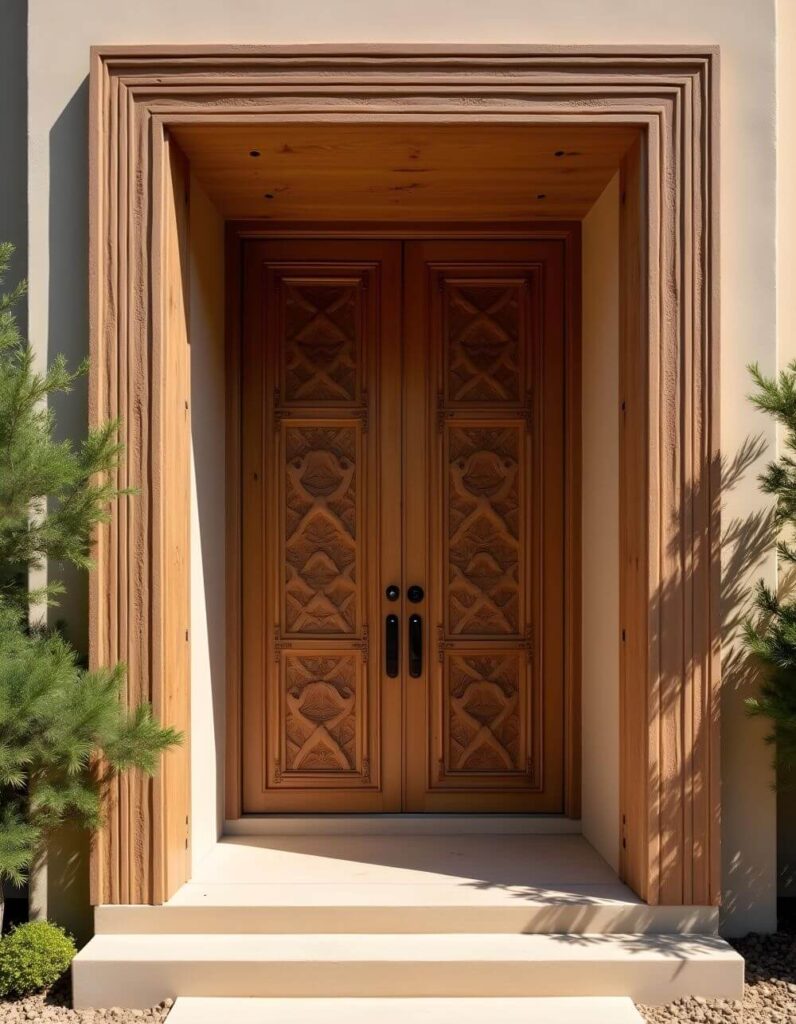
These traditional doors function as art installations more than entryways. Their influence ripples through modern West African home design, inspiring contemporary doors with similar dramatic presence. A grand entrance becomes a daily reminder of heritage and craftsmanship.
2. Textiles and Patterns: Bringing Color and Culture Home
If woodcraft anchors West African interiors, textiles set them ablaze. This region doesn’t apologize for color. Bold, vibrant, unrestrained—West African fabrics wear their cultural pride openly.
Iconic Fabrics With Deep Roots
I remember the fabrics hanging in markets, each one unique in its own ways. Mali’s mud cloth with its earthy geometric patterns. Ghana’s Kente cloth shimmering with royal significance. Nigeria’s Adire cloth dyed in mesmerizing indigo swirls.
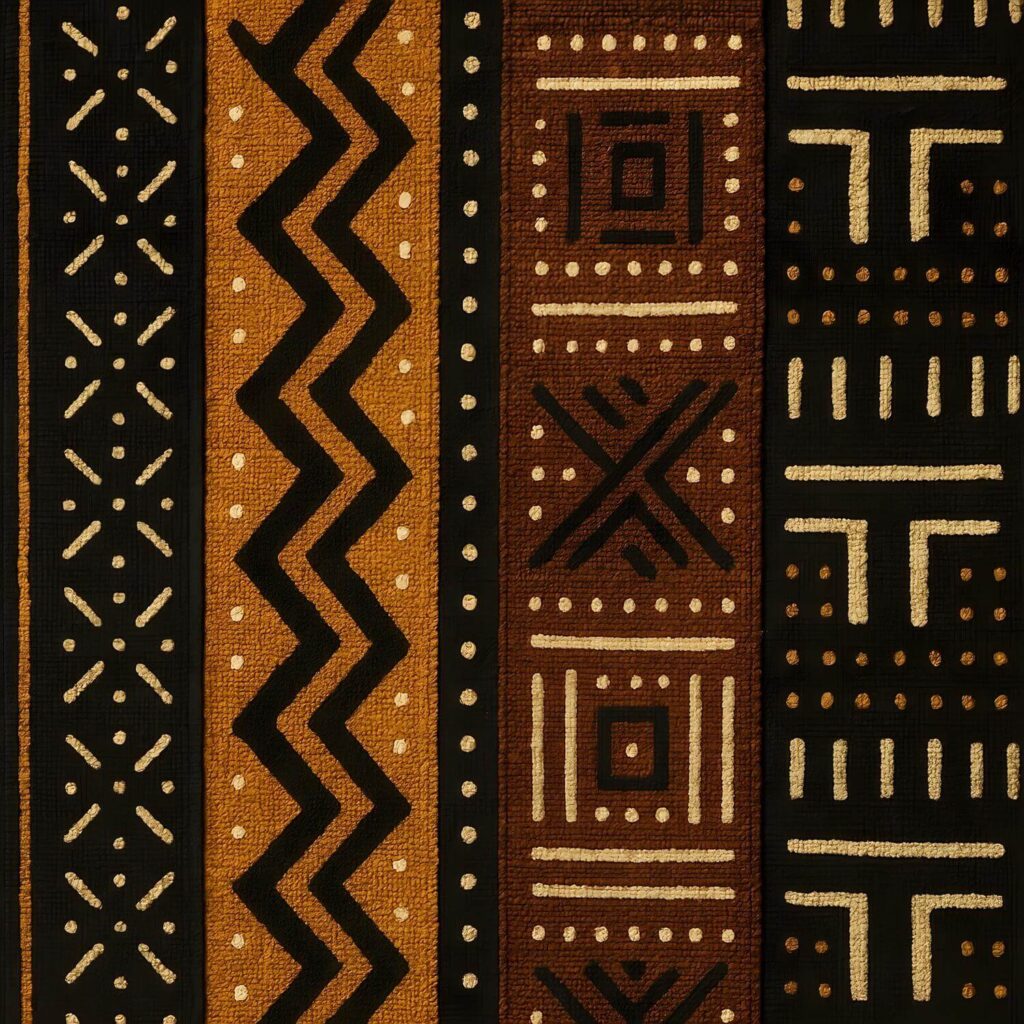


Let’s break down what makes each one special:
- Mud cloth (Bogolanfini in Mali) gets handwoven and dyed using fermented mud. Yes, actual mud. The labor-intensive process creates striking geometric designs in rich browns and blacks. Its symbolism runs deep, with patterns representing concepts like family, growth, or protection.
- Adire cloth comes from Nigeria’s Yoruba people, who pioneered tie-dye techniques centuries ago. The indigo patterns emerge through resist-dyeing methods, creating organic designs that feel both ancient and contemporary. No two pieces look identical.
- Kente cloth was historically woven for Ghanaian royalty using vibrant silk or cotton strips. The colors carry specific meanings: gold represents royalty and wealth, green symbolizes growth and harvest. Today it’s become a bold design choice for interiors seeking cultural connection.
Bold Design Accents
The possibilities for incorporating these textiles into your space stretch endlessly.
Easy entry points:
- Throw pillows with covers made from bold-patterned textiles
- Upholstered accent chairs or ottomans that become focal points
- Rugs or wall hangings introducing color without overwhelming the space
You May Also Like: How to Use African Print Textiles for an Exciting Home
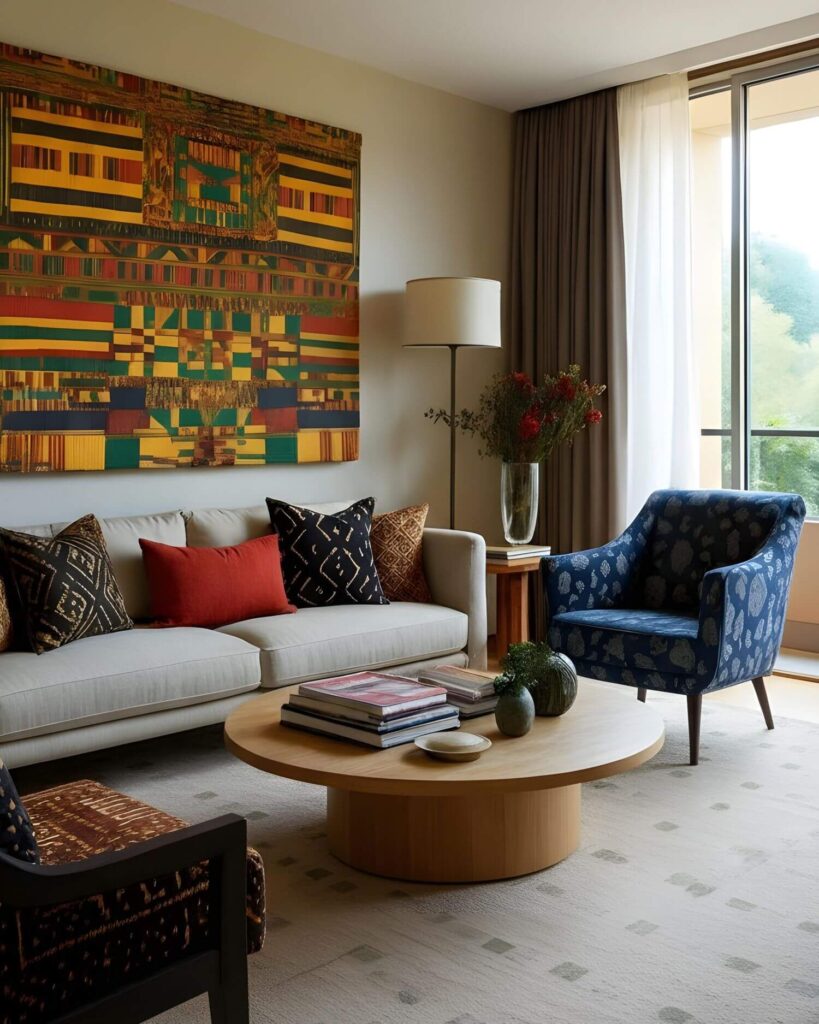
Feeling more adventurous? African-inspired wallpaper can transform an entire wall into a statement piece. This works particularly well in bedrooms or dining areas where you want drama without competing with functional spaces.
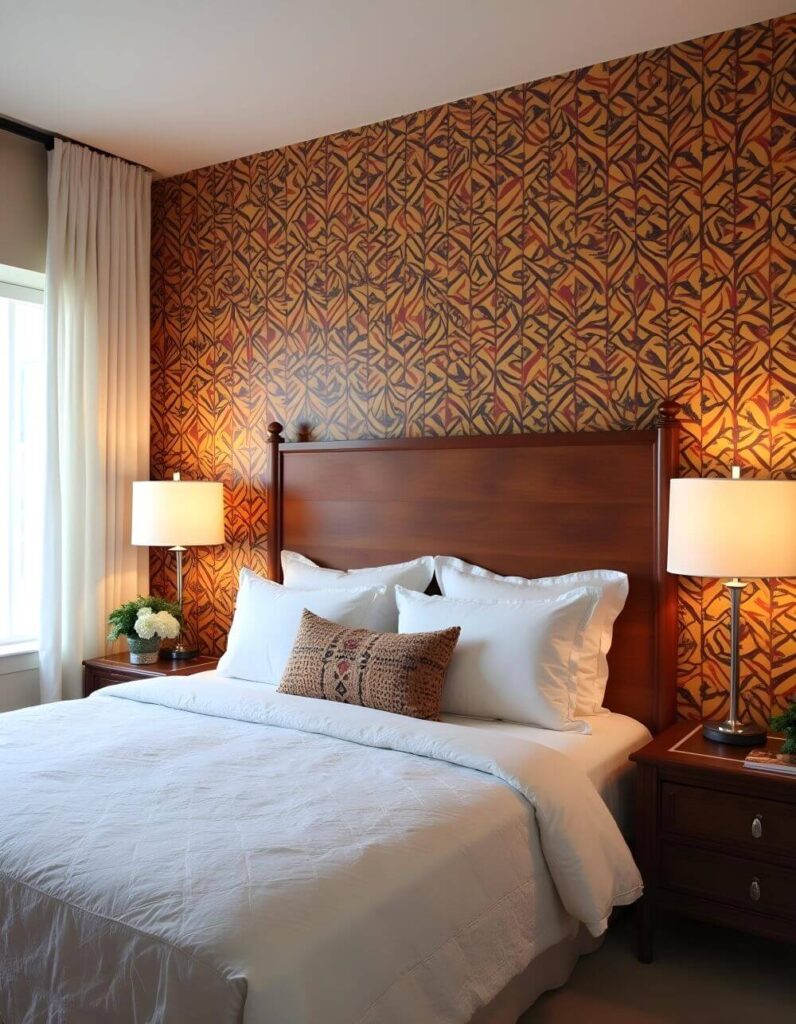
For pieces using high-quality West African textiles, Eva Sonaike’s collection deserves attention. She blends traditional patterns with contemporary design sensibilities, making it easy to bring this dynamic style into modern homes. Her work proves that cultural authenticity and modern aesthetics can coexist beautifully.
3. Vibrant West African Art: The Soul of the Region
Art in West Africa isn’t something you add at the end of decorating. It’s a way of understanding and expressing the world, woven into daily existence. No West African interior feels complete without the stunning work of local artists.
Contemporary Wall Art Captivates
Start with artists taking the global art scene by storm. In Senegal, Abdou Karim Fall captures everyday life with lively colors and expressive brushstrokes. His paintings burst with emotion, offering vivid windows into West African culture. The energy in his work makes walls come alive.
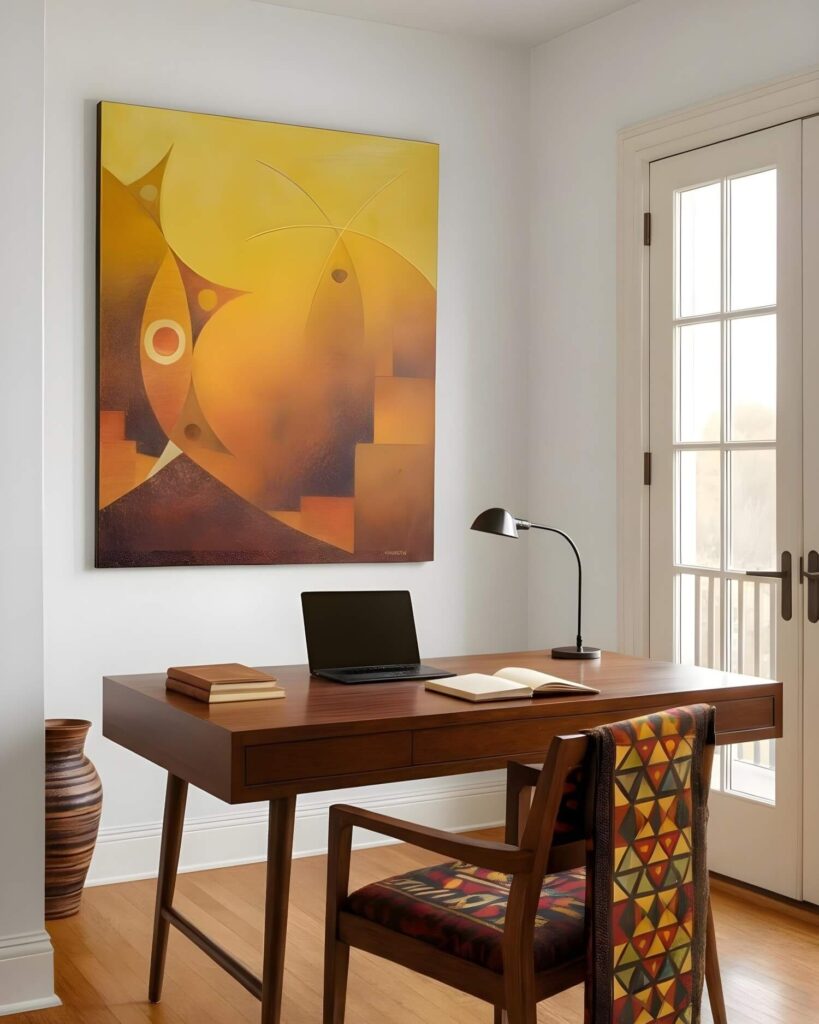
Meanwhile, Laolu Senbanjo from Nigeria developed his “Afromysterics” style by blending traditional Yoruba symbols with modern narratives. His intricate black-and-white illustrations create mesmerizing patterns that draw you closer for a better look. The detail reveals itself slowly, rewarding patient viewing.
Photography also plays a major role in West African art. The legendary Seydou Keïta documented Bamako’s cosmopolitan life during the 1940s and 50s. His black-and-white portraits offer glimpses into a golden era of West African urban culture.
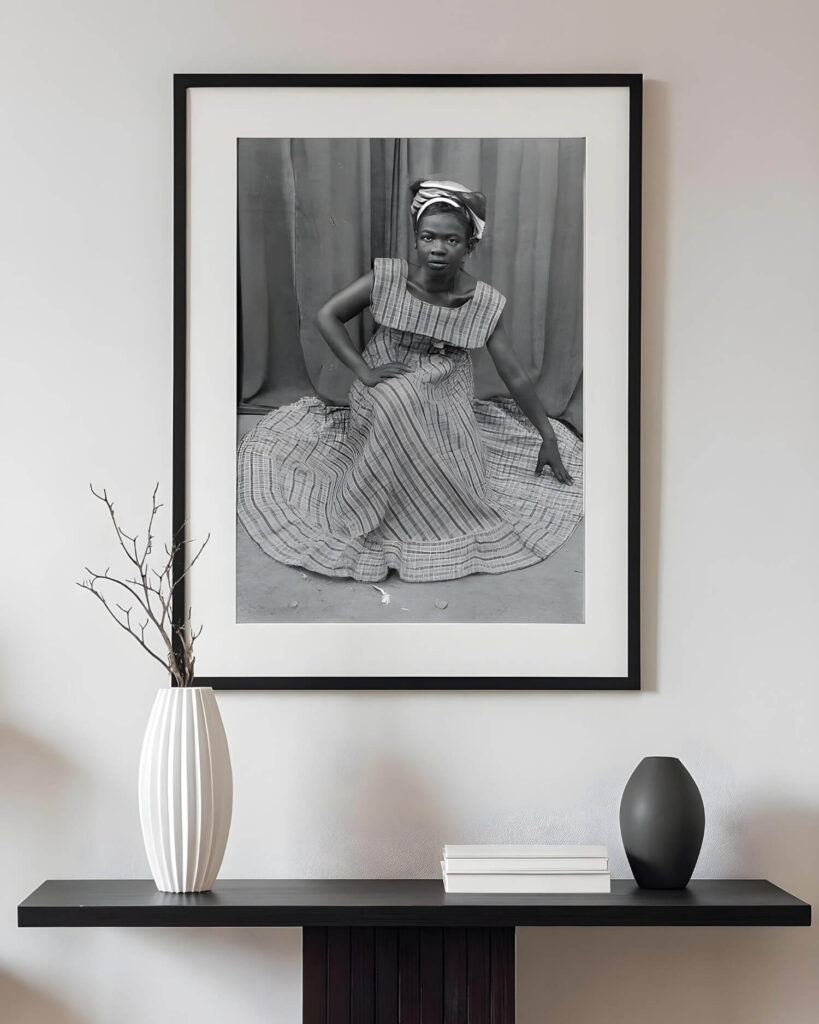
For those interested in exploring authentic West African art, online galleries like Art Kelen offer stunning collections celebrating both contemporary and traditional creations.
Discover African Wall Decor: 5 Powerful Ways To Energize Your Home
Masks and Bronze Figures Inspire respect
If you’re drawn to traditional crafts, you’re in for a treat. West Africa is home to some of the most iconic masks and sculptures in African art:
- Baule masks from Ivory Coast feature delicate features and serene expressions. They symbolize harmony and community, often representing idealized beauty in Baule culture.
- Dan masks from Liberia take a bolder approach. Their designs inspire awe during ceremonial dances, with exaggerated features meant to embody spiritual forces.
- Bronze sculptures from Benin represent the pinnacle of West African metalwork. Royal artisans were masters of casting elaborate figures and plaques. These pieces carry grandeur and historical weight that few art forms can match.
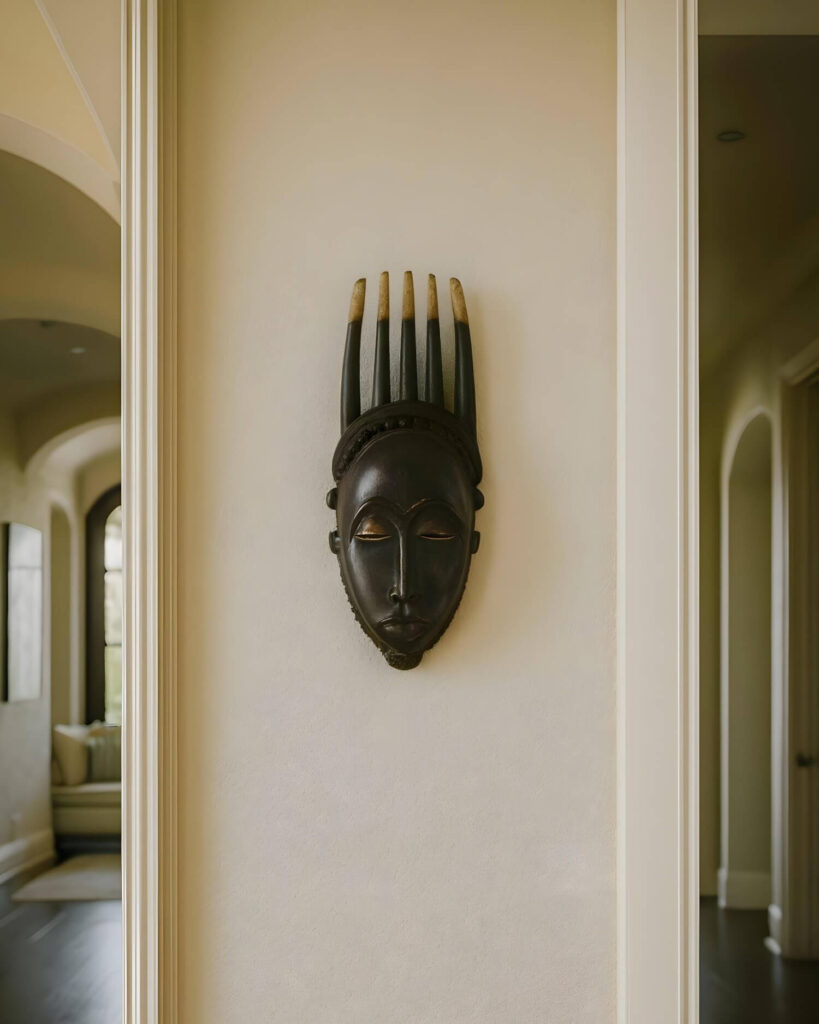
You May Also Like: 3 Authentic West African Masks: Your Guide to Sacred Art
Sculptural Wooden Pieces Are Conversation Starters
West African artisans transform wood into magnificent sculptures. These pieces build personality into your home while adding welcome drama. The organic forms and hand-carved details create visual interest that machine-made decor cannot replicate. They remind us that the most simple objects can also be deeply beautiful.
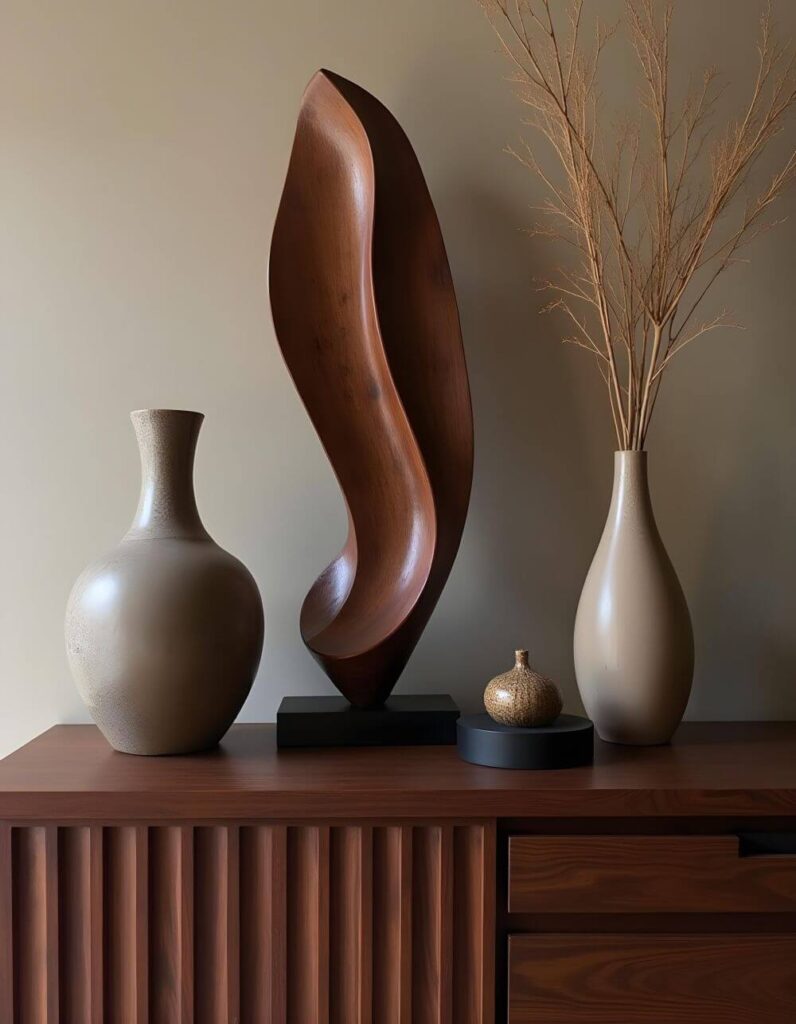
The range spans from subtle accents to bold statement pieces. Something exists to suit every taste and enhance any room.
Bringing West African Interior Design Into Your Home
To sum it up, West African Interior Design is a vibrant blend of creativity and cultural pride. It invites you into a world where craftsmanship matters and pieces carry meaning.
The three pillars work together to create spaces that feel alive. Woodcraft grounds your rooms with presence and history. Textiles inject energy and cultural pride. Art speaks to something deeper than decoration alone can reach.
These aren’t trends that fade. They’re expressions of culture that have survived and evolved for centuries. Bringing them into your home means participating in that ongoing story.
If you enjoyed this exploration of West African interior design, check out our article on 7 Exciting African Interior Design Styles for Your Next Makeover. It’s packed with ideas to inspire your next home transformation.

